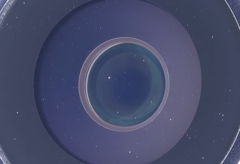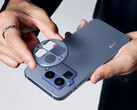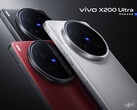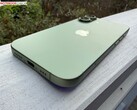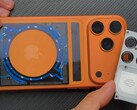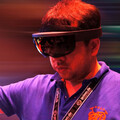Macrolab3D found an interesting new use case for his "wiggle stereoscope" in a short video clip. For the first time, he filmed a high-end smartphone in detail, namely the iPhone 17 Pro.
By wiggling the camera slightly at high speed, Macrolab reveals the spatial depth of components even without real 3D vision. This makes it easy to see where the finest dust particles have settled in the iPhone 17 Pro’s camera system during manufacturing. Macrolab3D differentiates between embedded dust and dust that settled on the lens after unboxing.
With a regular photo, it would be almost impossible to determine the spatial position inside the optics. A lot of light is also required, and it’s not clear if other manufacturers handle this better than Apple. Macrolab3D rarely focuses on tech products, even though he already released a video of an older iPhone back in July. However, that phone already showed visible signs of wear and tear. The dust itself probably won’t have much of an impact. Fingerprints and oily residue on the surface usually affects image quality much more, especially at night with bright highlights.
The display’s pixels of the iPhone 17 Pro are also fascinating. It’s far from being just a flat surface, as the wiggle technique makes at least some of the display’s layers visible. Above the pixel layer, there’s a separate grid that's likely the touch layer of the display. Of course, even Macrolab3D can’t make all layers of a display visible, but it will be interesting to see in the future which layers can still be revealed. For instance, do modern tandem OLED panels look different from the usual single-layer OLEDs?
It’s also interesting to see how the display looks along the edges. A noticeable amount of material is still lost toward the sides. There’s progress in this area, as explained in our recent coverage of Coherent’s presentation at the SID-MEC conference in Germany. With deep UV laser cutting, less than one pixel is lost at the edge of the panel.
The YouTuber has also closely examined other parts of the iPhone 17 Pro, including the packaging, the USB-C port and the speakers. According to Macrolab, the latter will probably never be that clean again. An AI voice is used for the narration in this video, and some commenters criticize this choice, but the content creator says his own voice doesn’t meet his standards.
He says that he’s not a professional speaker but rather a photographer. He did try to record his own voice six years ago, and the accent is noticeable, even though the video is still understandable. As he explained in YouTube comments, he prefers the videos to sound as if they were narrated by a BBC news anchor.
Normally, Macrolab3D focuses on other objects or subjects, such as insects and their intricate details. Even mundane objects like banknotes and materials can reveal fascinating textures thanks to the wiggle technique. In a separate video, Macrolab explains the purpose behind the wiggling. The other videos on his channel are also worth watching.




